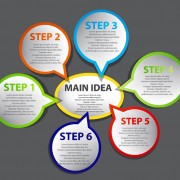How to Define Your Landing Page Goals and Metrics
In last week’s post, we gave you the five steps to having a successful landing page. This week, we’ll discuss the first step, how to define your landing pages goals and metrics.
Before you can create any new campaign, you need to know why you’re starting it. Having a clear set of goals is the foundation to a successful landing page. You need to have a clear idea of what you want to see happen when you launch it into the world.
Defining goals and the subsequent metrics that you need to use to know if you reached your goals isn’t always as straightforward as it might seem. It requires you to dig into the details and get specific about what success looks like for this campaign.
Here are four questions to ask yourself as you define your landing page goals and metrics before you start the design process.
-
What are your business objectives?
Start with the big picture. What is it that your business wants to accomplish? Sure you want more clients, but what do those clients look like? What are your buyer personas?
Revisit and get familiar with the reason why you’re starting this campaign. Perhaps it’s to boost sales. Perhaps it’s to generate bigger brand awareness. This is an important step that’s often overlooked. Don’t ignore it. Understanding your business objectives will bring clarity to the goal-setting process.
-
How will your landing page honor those objectives?
Once you are clear on what your business wants to accomplish, narrow in on this specific campaign. Where does your landing page fit in with your overall business objectives?
For example, if you want to generate brand awareness, you need to build clickthrough rates from ads to your landing page. If you want to generate more email subscribers, you need to have a strong hook to get people signed up.
From this, you’ll have a better gauge of what a conversion looks like. This allows you to get ultra-specific with your goals, helping you know if your campaign was a success or not.
-
What are your key performance indicators (KPIs) for this specific campaign?
With your goals in mind, it’s time to dig into the data and determine what signals success. If your goal is to sell more of product X, the KPI for this campaign is probably going to be online sales of product X or it could be to increase sales rep appointments by X. Note: You might need to specify where the sales happen (online vs. offline). This will serve as a better showing of your landing page success compared to other marketing campaigns you might have running simultaneously.
-
What metrics do you need to monitor?
With your KPIs in mind, determine the metrics that will show whether your campaign was a success. If you want more sales, define how many more sales you hope to receive as a result of this campaign. If you want more email subscribers, define how many people you want to have sign up. One more sale or one more email subscriber isn’t as successful as 100 more sales or subscribers. Get specific with the metrics you want to see as a result of this campaign.
The Gist
Your goals are the foundation of your landing page. Without knowing what you want to accomplish, you can’t create strong messaging or design. You won’t know what’s working and what you can test after launch. Get clear on these first.








